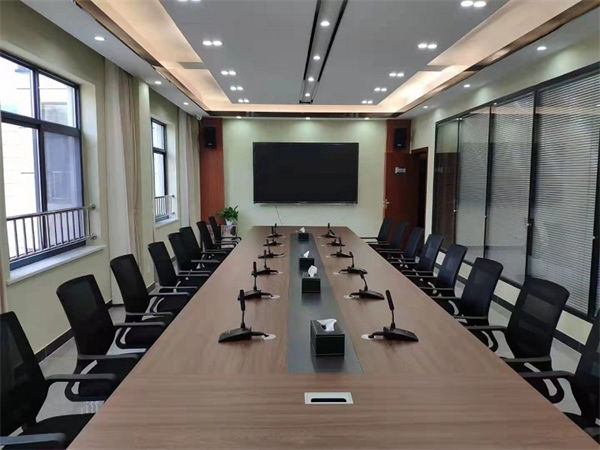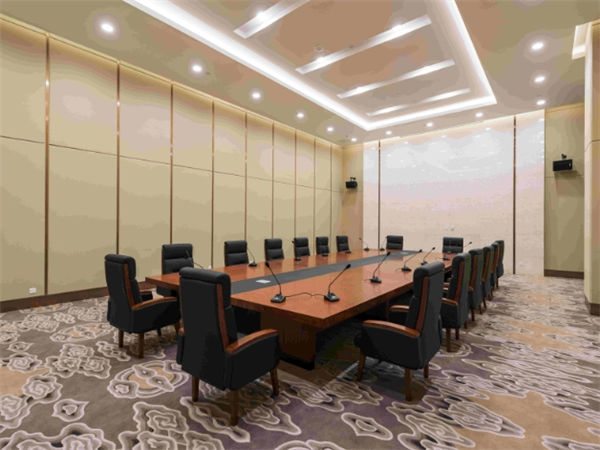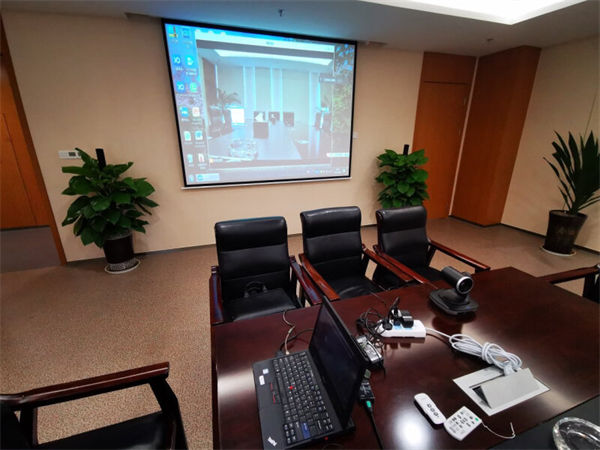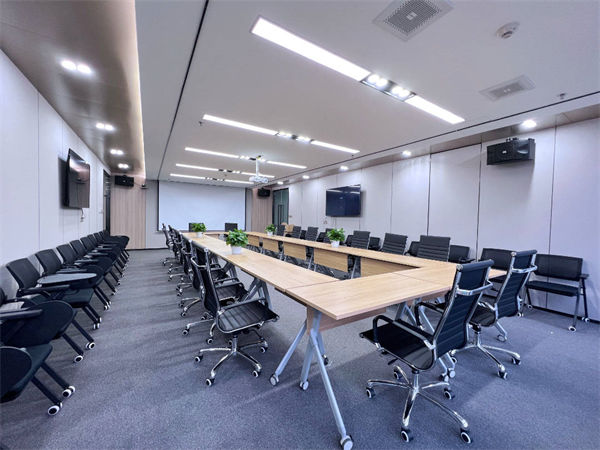Introduction
Conference systems have evolved significantly over the past few decades, transforming how businesses and organizations conduct meetings and collaborate. From traditional face-to-face meetings to virtual conferences, the landscape of communication has changed dramatically. This article aims to provide a comprehensive analysis of the evolution of conference systems, exploring their history, current trends, and future prospects.

Historical Context
Early Days of Conference Systems
In the early days, conference systems were largely limited to physical spaces where participants gathered in one location. These meetings were often costly and time-consuming, requiring travel and accommodation for participants. Despite these challenges, they served as a crucial platform for collaboration and decision-making.
The Rise of Teleconferencing
The advent of teleconferencing in the late 20th century marked a significant shift in the way conferences were conducted. With the development of telephone technology, businesses could now host meetings without the need for physical presence. This innovation opened up new possibilities for remote work and international collaboration.
The Digital Age and Virtual Conferences
The digital age brought forth another revolution in conference systems with the rise of virtual conferences. With the proliferation of internet technology, video conferencing became a viable option for hosting meetings online. This not only reduced costs associated with travel and accommodation but also expanded the reach of conferences to a global audience.
Current Trends in Conference Systems
Cloud-Based Solutions
One of the most prominent trends in contemporary conference systems is the adoption of cloud-based solutions. These platforms offer scalable, flexible, and cost-effective ways to host meetings, regardless of geographical constraints. Cloud-based conference systems enable real-time collaboration, file sharing, and recording capabilities, making them an essential tool for modern businesses.
Interactive Features
Modern conference systems are increasingly incorporating interactive features to enhance participation and engagement. Features such as polling, Q&A sessions, and breakout rooms allow participants to actively engage in discussions and contribute to decision-making processes. These interactive elements help maintain participant interest and ensure that all voices are heard.
Mobile Accessibility
With the widespread use of smartphones and tablets, mobile accessibility has become a crucial aspect of conference systems. Many platforms now offer mobile apps or responsive web designs that allow users to join meetings from anywhere, at any time. This flexibility enables participants to stay connected and productive, even when on the go.
Artificial Intelligence (AI) Integration
Artificial intelligence is playing a significant role in enhancing conference systems. AI-powered tools can assist with tasks such as transcription, translation, and summarization, making it easier for participants to follow along and take actionable insights from the discussions. Additionally, AI can analyze meeting data to provide valuable insights into participant behavior and engagement levels.
Future Prospects of Conference Systems
Augmented Reality (AR) and Virtual Reality (VR)
The integration of augmented reality (AR) and virtual reality (VR) technologies holds promise for the future of conference systems. These immersive experiences can create more engaging and realistic virtual environments, allowing participants to interact with each other as if they were in the same room. VR can also facilitate networking opportunities by providing a platform for attendees to explore different booths and exhibits during virtual conferences.
Sustainability and Greener Practices
As awareness of environmental issues grows, there is a growing demand for greener practices in conference systems. This includes reducing carbon footprints through virtual meetings, optimizing energy consumption in physical venues, and promoting sustainable materials in event production. Companies that prioritize sustainability are likely to gain a competitive advantage in the market.
Personalization and Customization
Future conference systems will likely focus on personalization and customization to meet the diverse needs of participants. This could involve offering tailored experiences based on user preferences, interests, and roles within the organization. Personalized content delivery and targeted interactions can enhance participant satisfaction and engagement levels.
Security and Privacy Concerns
As conference systems become more advanced, security and privacy concerns will become increasingly important. Ensuring the confidentiality of sensitive information and protecting against cyber threats will be critical to maintaining trust and confidence among users. Investments in robust encryption protocols and secure communication channels will be essential for safeguarding data integrity.
Challenges and Considerations
Technological Barriers
Despite their many advantages, conference systems are not without challenges. One major barrier is the requirement for reliable internet connectivity and high-quality equipment. In remote areas or developing regions, access to advanced technology may be limited, posing a challenge for inclusivity. Additionally, ensuring compatibility across different devices and platforms can be complex, requiring ongoing support and updates.
Cultural Differences
Another consideration in conference systems is the impact of cultural differences on communication styles and expectations. Virtual meetings can sometimes lead to misunderstandings due to language barriers or differing interpretations of non-verbal cues. It is essential for hosts to be mindful of cultural nuances and strive for inclusive practices that accommodate diverse backgrounds.
User Adoption and Training
Adopting new technologies can be challenging for some users who may feel overwhelmed by the complexity of modern conference systems. Providing adequate training and support is crucial for ensuring smooth transitions and maximizing productivity. User-friendly interfaces and intuitive design can help bridge this gap by making technology more accessible to all users.
Conclusion
The evolution of conference systems reflects the broader trends in technological advancement and changing business dynamics. From traditional face-to-face meetings to virtual conferences powered by AI and AR, these systems continue to evolve to meet the needs of modern organizations. While there are challenges to address, the potential benefits of enhanced collaboration, cost savings, and global reach make conference systems an indispensable tool for businesses worldwide. As we move forward, it will be important to stay attuned to emerging trends and adapt our strategies accordingly to leverage the full potential of these innovative platforms.







